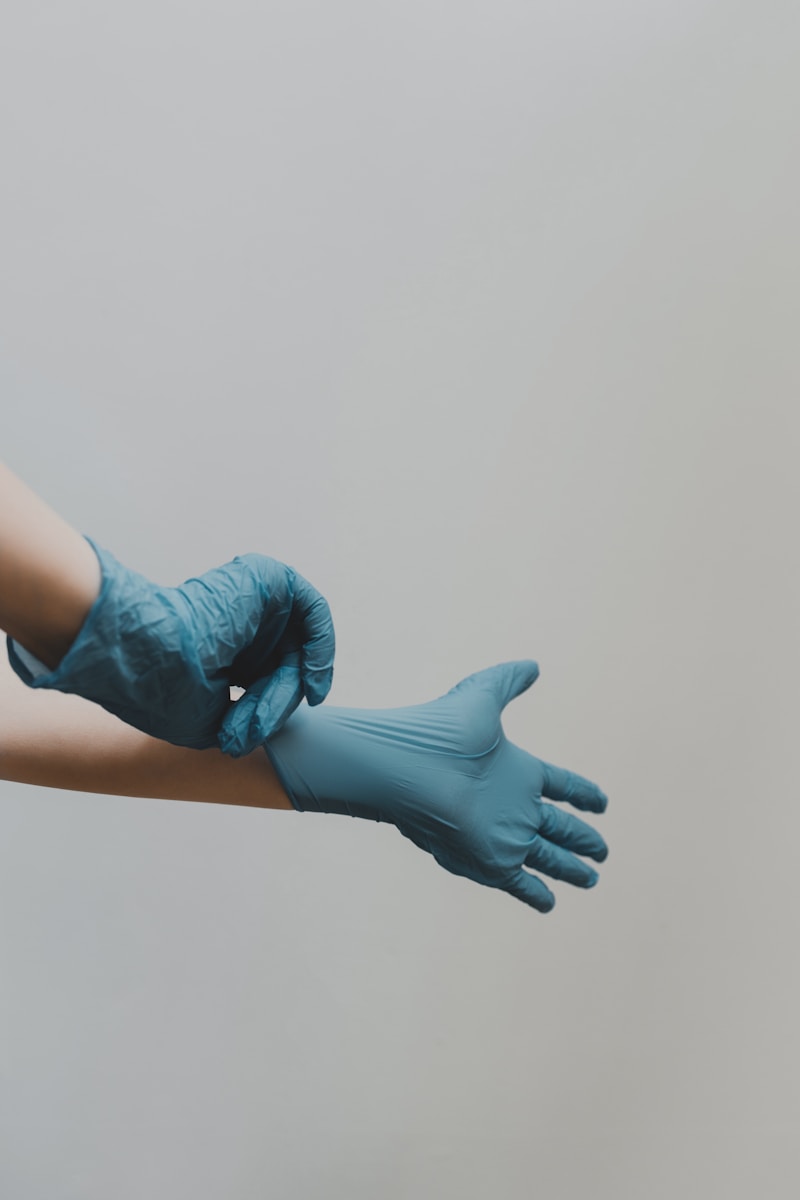Various Natural Home Remedies to Treat Yeast Infections
Yeast infections, caused by the overgrowth of the Candida fungus, can be uncomfortable and bothersome. Fortunately, there are several natural home remedies that can help alleviate the symptoms and get rid of the infection. These remedies aim to restore the balance of bacteria and yeast in the body and provide relief from itching, burning, and discharge. Here are some effective natural remedies for treating yeast infections:
1. Yogurt: Yogurt contains lactobacillus acidophilus, a beneficial bacteria that can help fight yeast infections. Applying plain, unsweetened yogurt to the affected area and consuming it orally may help restore the balance of bacteria in the body and alleviate symptoms.
2. Garlic: Garlic has antifungal properties that can help combat yeast infections. You can crush a few garlic cloves and apply the paste directly to the affected area for relief. Consuming garlic supplements or including it in your diet can also be beneficial.

3. Tea Tree Oil: Tea tree oil is a natural antifungal agent that can be effective in treating yeast infections. Dilute a few drops of tea tree oil with a carrier oil, such as coconut oil, and apply it to the affected area. However, it’s important to note that tea tree oil may cause skin irritation in some individuals, so it should be used with caution.
4. Apple Cider Vinegar: Apple cider vinegar has antimicrobial properties that can help restore the pH balance of the vagina and inhibit the growth of yeast. Add a cup of apple cider vinegar to your bathwater and soak in it for about 20 minutes. Repeat this remedy daily until the symptoms subside.
5. Probiotics: Probiotics are beneficial bacteria that can help restore the natural balance of microorganisms in the body. Consuming foods rich in probiotics, such as yogurt or fermented foods, can help prevent and manage yeast infections.
6. Coconut Oil: Coconut oil has antifungal properties and can help reduce the symptoms of yeast infections. Apply a small amount of coconut oil to the affected area several times a day for relief.
7. Cranberry Juice: Cranberry juice can help prevent the adherence of yeast to the urinary tract and reduce the risk of recurrent yeast infections. Drinking unsweetened cranberry juice regularly may be beneficial.
While these home remedies can provide relief from yeast infections, it’s important to consult a healthcare professional if symptoms persist or worsen. Additionally, maintaining good hygiene practices, wearing breathable underwear, and avoiding irritants can help prevent and manage yeast infections. By incorporating these natural remedies and preventive measures into your routine, you can effectively combat yeast infections and restore your vaginal health.
Understanding the Role of Probiotics in Preventing and Managing Yeast Infections
Yeast infections are a common problem that many individuals face at some point in their lives. These infections, caused by an overgrowth of the Candida fungus, can lead to uncomfortable symptoms such as itching, burning, and discharge. While traditional treatment options like antifungal medications are available, some individuals turn to probiotics as a natural alternative to manage and prevent yeast infections.
Probiotics are beneficial bacteria that can support the overall health of the body. They are commonly found in fermented foods like yogurt, sauerkraut, and kimchi, as well as in supplement form. When it comes to yeast infections, probiotics can play a crucial role in maintaining a healthy vaginal environment.
One of the primary ways probiotics help with yeast infections is by maintaining the balance of bacteria in the vaginal area. The vagina naturally contains a mixture of bacteria, including both good and harmful strains. However, certain factors like antibiotic use, hormonal changes, or a weakened immune system can disrupt this balance, allowing Candida to overgrow. By introducing probiotics into the body, you can help replenish the good bacteria and restore a healthy balance, making it more difficult for yeast to thrive.
Probiotics can also strengthen the immune system, which plays a vital role in preventing and managing yeast infections. A robust immune system can better defend against pathogens, including Candida. By supporting immune function, probiotics can help reduce the likelihood of developing recurrent yeast infections.
Another way probiotics can be beneficial is by producing substances that inhibit the growth of Candida. Some strains of probiotics produce natural by-products, such as lactic acid and hydrogen peroxide, which create an acidic environment that is unfavorable for yeast growth. This can help prevent the overgrowth of Candida and reduce the risk of developing a yeast infection.
When it comes to choosing probiotics for yeast infections, it’s essential to select strains that are specifically beneficial for vaginal health. Look for products that contain strains like Lactobacillus acidophilus, Lactobacillus rhamnosus, or Lactobacillus reuteri. These strains have been shown to help maintain vaginal health and prevent recurrent yeast infections.
Probiotics into your routine can help prevent and manage yeast infections naturally. However, it’s important to note that probiotics alone may not be sufficient for treating severe or persistent infections. If you’re experiencing significant symptoms or recurrent infections, it’s recommended to consult with a healthcare professional who can provide appropriate treatment options.
Probiotics can play a valuable role in preventing and managing yeast infections. By maintaining a healthy balance of bacteria in the vaginal area, strengthening the immune system, and producing substances that inhibit the growth of Candida, probiotics provide a natural approach for dealing with these troublesome infections. probiotics into your daily routine may help reduce the risk of yeast infections and promote overall vaginal health.
READ ALSO: How To Have A Healthy Liver
Effective Dietary Changes to Avoid and Combat Yeast Infections
Yeast infections, also known as candidiasis, occur when there is an overgrowth of Candida fungus in the body. While medical treatments are available to address this issue, incorporating certain dietary changes can complement traditional treatments and help prevent future infections. By adopting a yeast infection diet, individuals can promote balance in their body’s microbiome and reduce the risk of yeast overgrowth. Here are some effective dietary changes to consider:
- Reduce Sugar and Yeast Intake:
- Consuming excessive amounts of sugar and yeast can contribute to yeast infection growth. It is crucial to limit the intake of sugary foods and beverages, including candies, sodas, and baked goods.
- Additionally, avoid foods that contain yeast or contribute to yeast production. Some examples include yeast-containing bread, alcoholic beverages, and fermented foods like vinegar, soy sauce, and pickles.
- Increase Probiotic-Rich Foods:
- Probiotics are beneficial bacteria that help maintain a healthy balance in the gut and prevent the overgrowth of harmful fungi. Including probiotic-rich foods in your diet can promote a healthy microbiome and reduce the risk of yeast infections.
- Incorporate foods like yogurt, kefir, sauerkraut, kimchi, and other fermented foods into your daily meals to boost your probiotic intake naturally.
- Consume Antifungal Foods:
- Certain foods possess antifungal properties that can help combat yeast infections. These include garlic, coconut oil, raw apple cider vinegar, ginger, and oregano.
- these ingredients into your cooking or consuming them in their natural form can support your body’s fight against yeast overgrowth.
- Increase Fiber Intake:
- A fiber-rich diet promotes healthy digestion and helps eliminate toxins from the body. By including plenty of fruits, vegetables, whole grains, and legumes in your meals, you can assist your body in maintaining optimal gut health.
- Additionally, fiber can help regulate blood sugar levels, which is essential in preventing yeast overgrowth.
- Stay Hydrated:
- Drinking an adequate amount of water promotes overall health and helps flush out toxins from the body. Aim to consume at least 8 cups (64 ounces) of water daily, or more if you engage in physical activity or live in a hot climate.
While dietary changes can help prevent and combat yeast infections, it’s essential to consult with a healthcare professional for an accurate diagnosis and to discuss the best treatment options for your specific situation. By combining a yeast infection diet with medical advice, individuals can take proactive steps to reduce the occurrence of yeast infections and improve their overall well-being.
The Importance of Hygiene in Preventing Yeast Infections
Yeast infections can be uncomfortable and bothersome. However, by following good hygiene practices, you can significantly reduce the risk of developing these infections. Proper hygiene is crucial when it comes to preventing the overgrowth of yeast and maintaining a healthy balance of bacteria. Here are some essential hygiene practices that can help you reduce the risk of yeast infections:
1. Keep the genital area clean and dry: One of the most effective ways to prevent yeast infections is to maintain proper hygiene in the genital area. Gently clean the area with mild, unscented soap and warm water daily. After washing, make sure to dry the area thoroughly, as moisture can promote the growth of yeast.
2. Avoid irritating substances: Perfumed soaps, douches, and feminine hygiene sprays can disrupt the natural balance of bacteria in the vagina, making it more susceptible to yeast infections. It’s best to avoid these products or opt for unscented alternatives that are less likely to cause irritation.
3. Wipe front to back: When using the toilet, always remember to wipe from the front to the back. This simple practice helps prevent bacteria from the anal area from spreading to the vagina, reducing the risk of infection.
4. Choose breathable underwear: Tight-fitting underwear made from synthetic fabrics can trap moisture and heat, creating an environment that favors yeast growth. Opt for breathable underwear made from natural fabrics like cotton to allow better airflow and keep the genital area dry.
5. Change out of wet clothes promptly: Wearing wet or damp clothing for extended periods can promote yeast growth. Whether it’s after swimming or a sweaty workout, change out of wet clothes as soon as possible to reduce the risk of developing an infection.
6. Practice safe sex: Sexual activity can introduce bacteria and disrupt the vaginal balance, increasing the risk of yeast infections. Use condoms and practice good hygiene before and after sexual intercourse to minimize the chances of infection.
7. Avoid douching: Douching is not necessary for maintaining vaginal health and can disturb the natural balance of bacteria. The vagina is self-cleaning and produces its own discharge to help prevent infections. By avoiding douching, you allow the vagina to maintain its natural pH level and reduce the risk of yeast overgrowth.
By incorporating these simple hygiene practices into your daily routine, you can significantly reduce the risk of developing yeast infections. Remember to consult with a healthcare professional if you experience persistent or recurrent symptoms, as they may recommend further evaluation or treatment options. With proper hygiene and care, you can keep yeast infections at bay and maintain a healthy vaginal environment.
Over-the-Counter Medications and Treatments for Yeast Infections
When it comes to dealing with yeast infections, there are a variety of over-the-counter (OTC) medications and treatments available that can help provide relief and promote healing. While it’s always best to consult with a healthcare professional for a proper diagnosis and treatment plan, OTC options can offer temporary relief until you’re able to see a doctor.
One commonly used OTC treatment for yeast infections is antifungal creams. These creams usually contain ingredients such as clotrimazole or miconazole, which work by targeting the yeast and reducing its growth. They are typically applied directly to the affected area and can provide relief from itching, burning, and other uncomfortable symptoms.
Another OTC option is antifungal suppositories. These are inserted into the vagina and help to combat the yeast internally. Similar to creams, suppositories contain antifungal agents that work to reduce the overgrowth of yeast. It’s important to carefully follow the instructions provided with the suppositories to ensure proper application and maximum effectiveness.
In addition to creams and suppositories, there are also OTC oral antifungal medications available. These medications, such as fluconazole, work systemically to treat yeast infections throughout the body. They are typically taken as a single dose or a series of doses, depending on the severity of the infection. Oral medications can be a convenient option for those who prefer not to use topical treatments.
When using OTC medications and treatments for yeast infections, it’s essential to read and follow the instructions carefully. Some individuals may experience side effects or have underlying conditions that require medical intervention. If symptoms persist or worsen after using OTC treatments, it’s important to consult with a healthcare professional for a proper diagnosis and alternative treatment options.
It’s also worth noting that while OTC medications can provide temporary relief, they may not address the underlying cause of the yeast infection. Lifestyle changes, such as avoiding certain foods or incorporating probiotics into your routine, may be necessary to prevent recurring infections. Additionally, practicing good hygiene and wearing breathable cotton underwear can help reduce the risk of future yeast infections.
Over-the-counter medications and treatments can be a convenient and effective way to address yeast infections. However, it’s important to use them in conjunction with proper hygiene practices and lifestyle changes for long-term management. Consulting with a healthcare professional is always recommended for a comprehensive diagnosis and individualized treatment plan.
Conclusion
Yeast infections can be effectively managed and prevented through a combination of natural home remedies, probiotics, dietary changes, essential hygiene practices, and over-the-counter medications. Natural remedies such as yogurt, tea tree oil, and garlic have been found to alleviate symptoms and promote balance in the vaginal flora. Probiotics, both in supplement form and through the consumption of fermented foods, can play a crucial role in maintaining a healthy balance of bacteria in the body and preventing yeast overgrowth. Making dietary changes, such as reducing sugar intake and incorporating more whole foods, can also help to prevent and combat yeast infections.
Maintaining proper hygiene practices is essential in reducing the risk of yeast infections. This includes keeping the vaginal area clean and dry, avoiding the use of scented products, wearing breathable cotton underwear, and practicing safe sex. These practices can help to create an environment that is less conducive to yeast overgrowth.
In some cases, over-the-counter medications and treatments may be necessary to effectively treat yeast infections. Antifungal creams and suppositories are commonly used to address the infection directly. It is important to follow the instructions provided by the manufacturer and consult with a healthcare professional if symptoms persist or worsen.
It is important to approach yeast infections from a holistic perspective, focusing on both symptom relief and prevention. By incorporating natural remedies, probiotics, dietary changes, essential hygiene practices, and utilizing over-the-counter treatments when necessary, individuals can effectively manage and prevent yeast infections. It is also recommended to seek medical advice if symptoms persist or recur frequently, as some underlying health conditions may contribute to the occurrence of yeast infections. With the right approach and a proactive mindset, individuals can successfully combat yeast infections and maintain optimal vaginal health.
Originally posted 2024-02-03 15:53:14.



